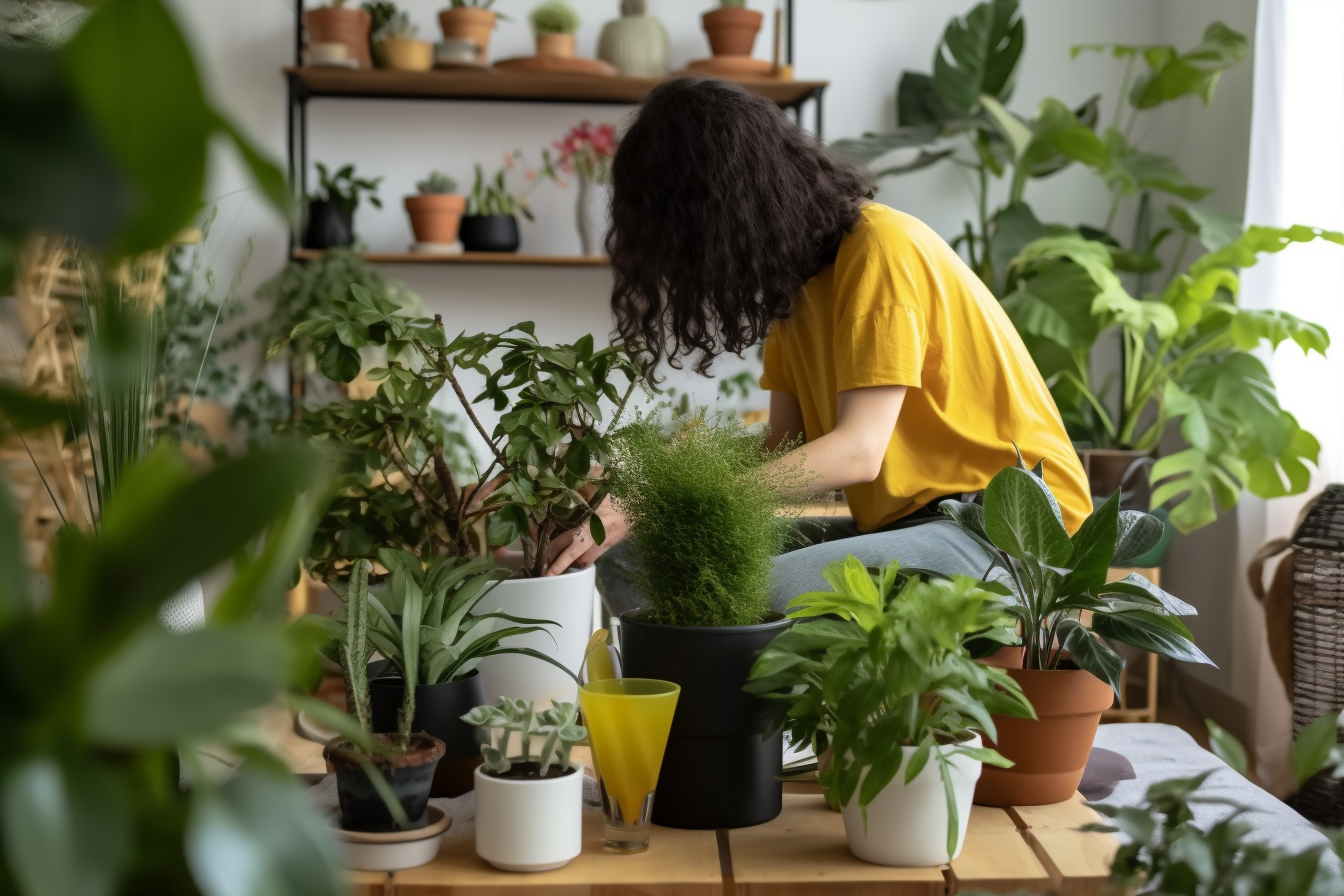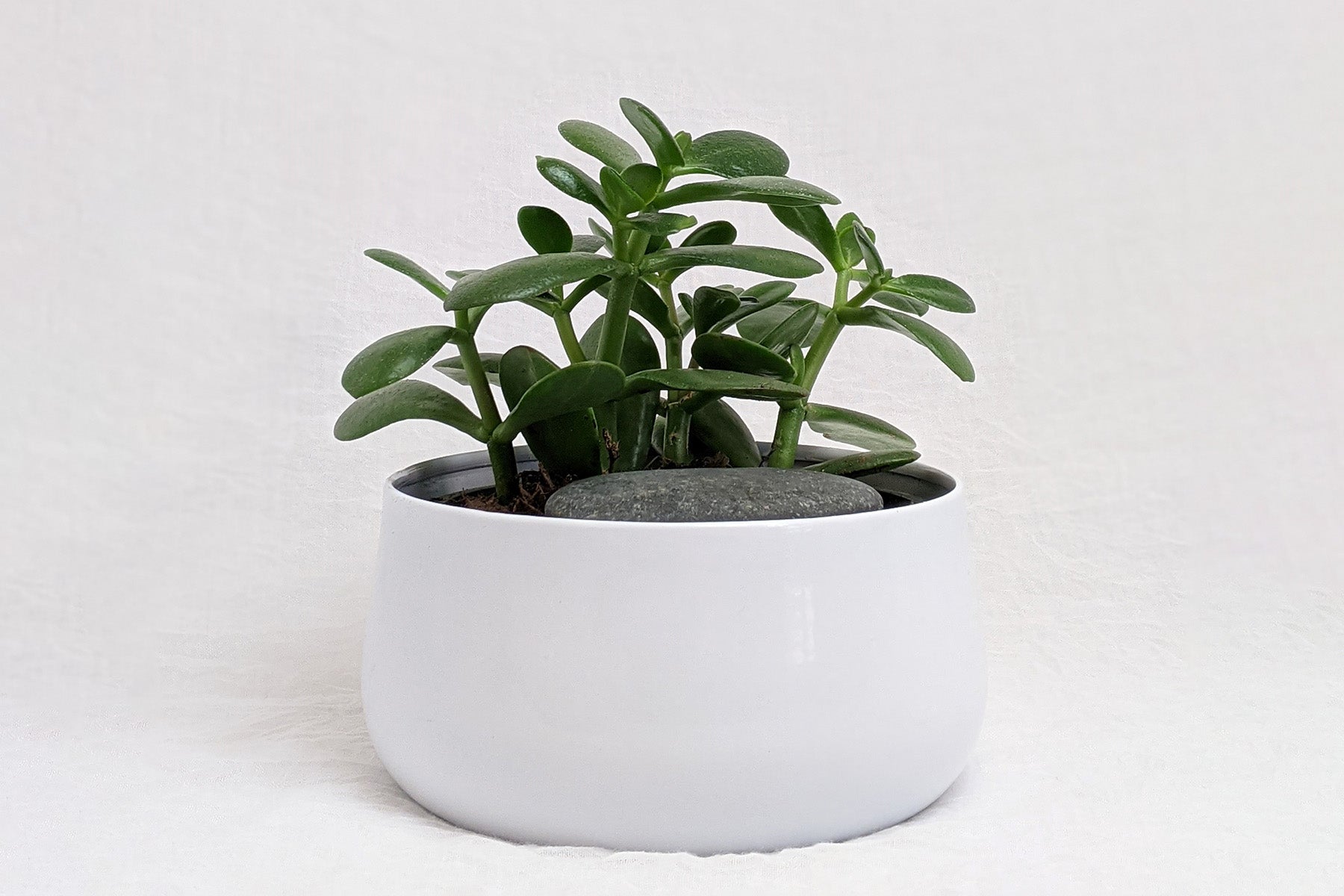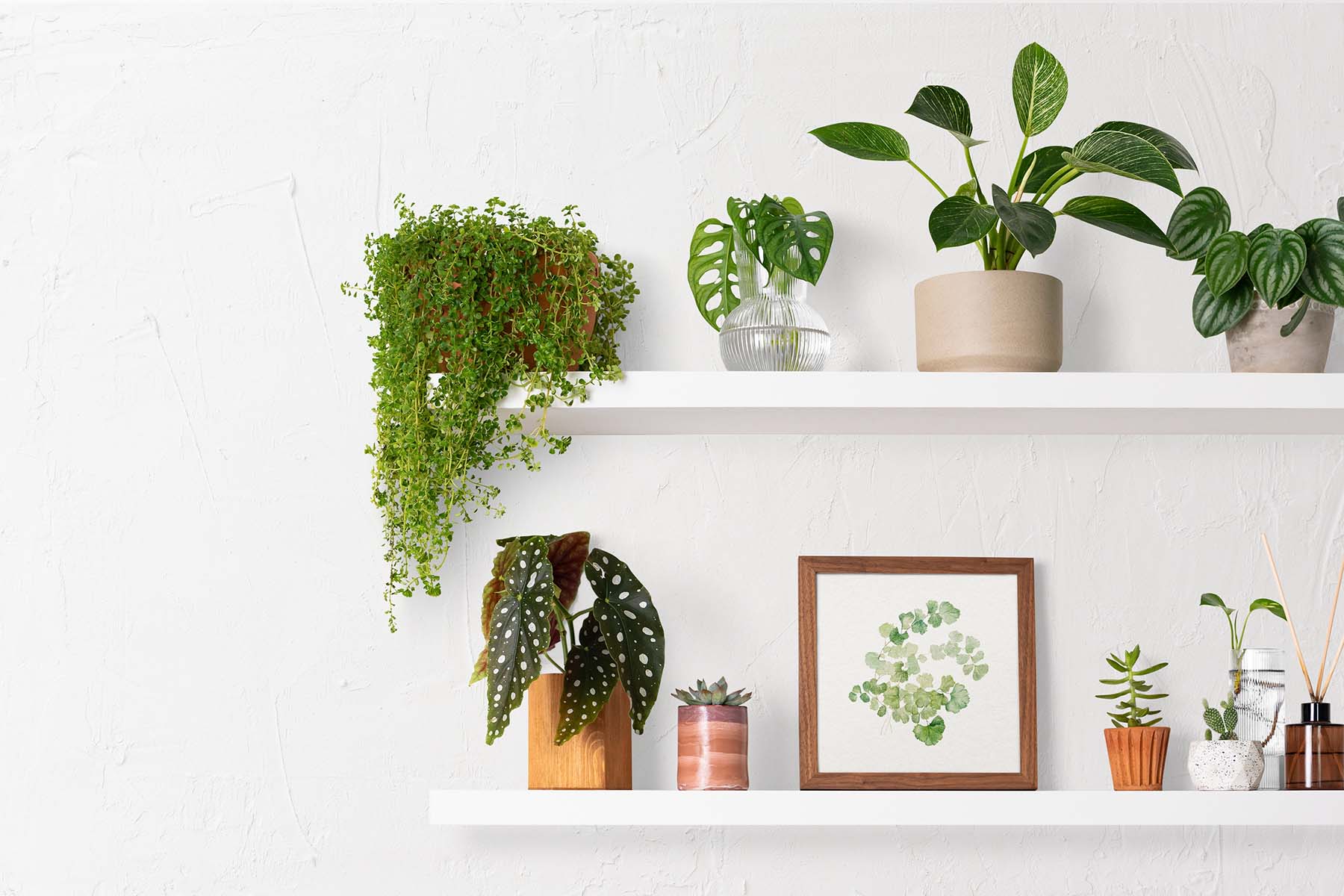
5 Tips to Prepare Your Houseplants for the Growing Season in Canada
It's the most wonderful time of the year again. No, not Christmas, the new growing season! Spring is like Christmas for plant parents as our houseplants start to provide us with the gift of new growth. As we enjoy the longer and brighter days, our plants enjoy them even more, coming out of dormancy and stretching their roots.
However, along with the longer days comes more energy for plants, as they have significantly more light for photosynthesis. So it's time to do some "spring cleaning" on your plants, updating your plant care routine, and bumping it up a notch. Here are our top 5 tips to prepare your indoor plants for the new growing season:
Tip 1: Spring Cleaning for Healthy Indoor Plants
Every spring, it is recommended you dust off your plants and remove any old, dying growth. Since it is still too cold in Canada to bring your plants outside to hose off, dusting off your plant's leaves and putting them in the shower to give them a good rinse is the next best thing! Removing dust and showering off your plants is also a great step in pest prevention, as pests love our dusty, dry winter homes. This is even great to do throughout the whole winter but especially now, as removing the dust will clear the way for more effective photosynthesis.
Also, give your plant a once over, assess the overall health of your plant, and trim off any decaying growth. After this older foliage is removed, the plant can send all its energy into maintaining healthy mature leaves as well as towards healthy new growth. The dormant stage is over and new life is beginning!
☀️
It is completely natural for plants to have yellowing foliage, as long as it isn’t due to pest or watering issues. When it comes to lighting, if a plant is receiving lower light it is only natural for it to shed some leaves as it adjusts! Be aware of your plant's environment and try not to worry over every dying leaf. Check out our Ultimate Houseplant Lighting Guide.
Tip 2: Assess and Repot Your Plants for Optimal Growth
Right about now is the time you want to spend assessing whether or not your plants need to be repotted. This depends on the size and health of your plant, its root system, its nutrient supply and more. But we have everything you need to know about repotting outlined in "A Step-By-Step Guide To Repotting Your Plants: When, Why, and How?" It will go over when it is the best time to repot, the most common reasons for repotting, then ending in a complete guide of what to do while repotting. We've got you covered!
Tip 3: Updating Your Houseplant Watering Schedule
The amount of water a plant needs is directly related to the amount of light it is getting. Now that the days are getting longer, meaning that the majority of our plants are now getting more light, it only makes sense that they will also need more water! This has nothing to do with the quantity of water you are giving your plants but rather the frequency of waterings. Increasing the frequency will balance with the increase of temperatures and light levels. Just like usual, give your plants a good soak every time you water them, watering until there is water coming out of the drainage holes, then dump any excess water.
📒
Make sure to keep an eye on your plants individually, not as a collective, as every plant has different needs when it comes to watering, lighting, and humidity!
How do you know when to increase the frequency though? Thankfully, our plants are always telling us what they need. If you notice the soil drying out faster than normal, or a plant's foliage is drooping sooner than usual, start increasing how often you water that plant to avoid getting to that point! Our plants are beginning to get a little more active, meaning they are using the nutrients and water that they are being given more quickly. If the water doesn't seem to absorb in the soil, try sitting it in a bowl of water for 30 minutes to let it soak up the water from the bottom, or consider whether the plant needs repotting. Check out our houseplant watering guide.
Tip 4: Nourish Your Plants with the Right Fertilizer
Here's the fun part of spring: fertilizing! Now is the time when you want to start providing your plants the nutrients that they need to help support their new growth. Fertilizing is also very important for the long-term health of your plant, similarly to how we take supplements or vitamins for our long-term health.
Some important notes to remember before you start to fertilize:
- If your plant is freshly repotted, avoid fertilizing for about six weeks, which will significantly reduce the chances of burning any new root growth
- Make sure the soil is already evenly moist before fertilizing
- Although the winter months are usually a dormant period for lots of houseplants, it is completely normal for some plants to still continue to grow throughout those months as well. Being inside, they still receive warm temperatures throughout the day, they just have less light with which to photosynthesize. If your plant is actively growing, consider giving it some fertilizer then as well
As for what type of fertilizer to use, there are many options out there but a very reliable one is an all-purpose liquid fertilizer. Just make sure to follow the instructions on the bottle and dilute to half strength (it is better to under-fertilize). Remember, not all plants are equal so make sure to refer to the relevant information to find out what is best for your plant, as not all fertilizers are made equal. Too much of a good thing is possible when it comes to fertilizing but feel free to reach out to our plant experts for any more guidance fertilizing! Learn more about houseplant fertilizing.
Tip 5: Consider Relocating Your Plants for Ideal Lighting
As I'm sure you already know, although you may not have given a second thought if you are still new to plants, the location of the sun changes throughout the seasons. Where it may have shone in one spot of your home throughout the winter, it is now no longer there during the spring and summer. Check the light specifications of your plant and consider moving it, if the location is either getting a lot more or a lot less sun now. Since the days will be so much longer and brighter, keeping your plants directly next to the window may not be as beneficial as now they are receiving too much light. On the flip side, relocate your plants again if they begin to stretch towards their light source.
Another factor to consider when it comes to where your plants are sitting is whether or not they will be hit with any cold air drafts coming from your air conditioning during the summer. Just as they don't enjoy the drafts from our heaters during the winter months, they certainly will not enjoy cooler versions of those same drafts in the summer months!
That is it for our official tips on how to prepare your plants for the spring, but we also have a couple of honourable mentions included here at the end of this article. They are not official tips because they are not absolutely necessary in this preparation process, and your plants will be fine if they are not followed. However, we thought it would be nice to include them just in case you feel inclined to know more about what your plants may enjoy!
Honourable Mention #1: Introduce Your Plants to the Outdoors
Although this is not necessary, as your plants will be perfectly happy inside, consider moving your plants outdoors when the nighttime temperatures are consistently over 10°C. They will love the bright light and humidity from being outdoors! Make sure you know their light requirements though and don't place them in the direct sun, as most tropicals are bright, indirect light-lovers. It is also important to train the plants that you will be putting in the sun, rather than just going from your shady home directly to the scorching sun. Again, reach out to our plant experts for any more guidance in this area! Learn more about When & How to Transition Your Plants Outdoors.
Honourable Mention #2: Prune and Propagate for Plant Aesthetics and Growth
Unlike our first tip, which included trimming your plants of older growth, spring is also the time when it is most beneficial to prune your plants if you desire them to grow in a specific shape or to propagate any cuttings you've been interested in! Not every tropical needs to be pruned, but some will benefit from this to 1) keep their shape, or encourage fuller growth and 2) remove any parts of the plant that may have gotten "leggy," or stretched out during the darker months. Make sure to do the research on your specific plant because pruning is not necessary on all plants!
Sometimes these pruned-off pieces can be propagated and rooted in water or in soil, to add more fullness to your plant! Propagation is the process of growing new plants from the original parent plant. Depending on the plant, you can use these propagations to create a fuller parent plant, or even create a whole new plant for yourself or your friends! Plants are always helping us find ways to spread the love. Learn more about houseplant propagation.
Now that you know what your plants will need from you during this new season, go and spoil them with everything you can! They will flourish and thrive with all the longer, brighter days ahead.






